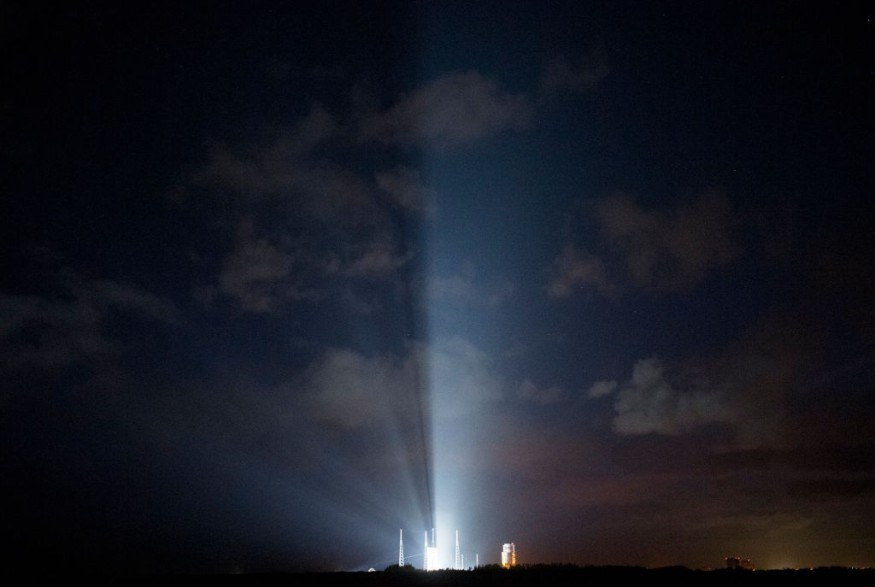Boeing will give "Rosie the Rocketeer" another ride as it tries to launch its CST-100 Starliner to the International Space Station next month.
The Starliner mission is the second uncrewed Orbital Flight Test (OFT-2). This private spacecraft is competing with SpaceX as one of two commercial partners with NASA to ferry personnel to and from the International Space Station.
It will launch atop an Atlas V rocket from Space Launch Complex 41 at Cape Canaveral Space Force Station at 2:53 p.m. on Friday, July 30.

After technical challenges, Starliner's maiden Orbital Flight Test in December 2019 did not make it to the ISS. While it did make a successful landing on Earth, NASA described the event as a "high visibility close call." Following the landing, a NASA-Boeing Independent Review Team discovered 80 flaws in the mission. This forthcoming launch will solve those shortcomings.
Although Boeing's Starliner capsule will not carry any astronauts on its next mission, it will transport one passenger to and from the International Space Station.
That passenger is Rosie the Rocketeer, an anthropomorphic test gadget, more commonly known as a flight dummy.
"Rosie the Rocketeer is buckled in for the upcoming Starliner launch!" officials wrote on NASA's Commercial Crew Program Twitter.
🚀 Rosie the Rocketeer is buckled in for the upcoming Starliner launch!
— NASA Commercial Crew (@Commercial_Crew) June 23, 2021
🌟 @BoeingSpace's anthropometric test device will fly on Starliner's second uncrewed mission, Orbital Flight Test-2, which is targeted to launch at 2:53 p.m. ET Friday, July 30: https://t.co/BhLc9Fraxq pic.twitter.com/JyrW9hgsqG
What Rosie the Rocketeer Will Do
Space.com said Rosie the Rocketeer will be making her second voyage. The dummy already flew on the first OFT and providing data through 15 sensors on what astronauts might feel on the new spacecraft. Those sensors will now be connected to the seat pallet, which stores the seats Rosie and future astronauts will sit in for this mission.
Rosie's primary responsibility for OFT-2 will be to maintain the Starliner's center of gravity throughout ascent, docking, undocking, and landing.
"While Rosie provided us critical insight into how much force her (sic) body experienced in the commander seat during the first OFT mission, these new sensors will capture data to characterize the motion of all four crew seats," Dan Niedermaier, crew module chief engineer at Boeing, said in the statement released by Boeing. "Generally, all seat locations behave similarly, however, there are small differences that our engineers want to validate to ensure everyone gets a nice, enjoyable ride."
The mission is for Starliner to stay in orbit for 10 days before docking with the ISS and landing on land in the western United States. If the flight is successful, the business will move on with a crewed test flight and eventually join SpaceX with operational missions.
When Is The Next Crewed Flight Test
Boeing's Crew Flight Test mission, which will fly NASA astronauts Barry Wilmore, Mike Fincke, and Nicole Mann to the International Space Station, is still on target to launch before the end of the year. This week, the Atlas V rocket for that flight arrived at Cape Canaveral.
Orlando Sentinel said the first operational mission to the ISS, Starliner-1, with astronauts Sunita Williams, Josh Cassada, Jeanette Epps, and Koichi Wakata of the Japanese space agency JAXA, could take place in April 2022.
SpaceX has flown two operational flights to the station, with a third planned for this autumn, after successfully completing its demonstration missions for its own aircraft, the Crew Dragon. Crew rotations run around six months, and SpaceX and Boeing were awarded six-flight contracts in the beginning.
After the Space Shuttle program ends, the commercial crew program will allow NASA to launch people from American territory, ending its reliance on Russia.
Check out more news and information on Space on Science Times.











